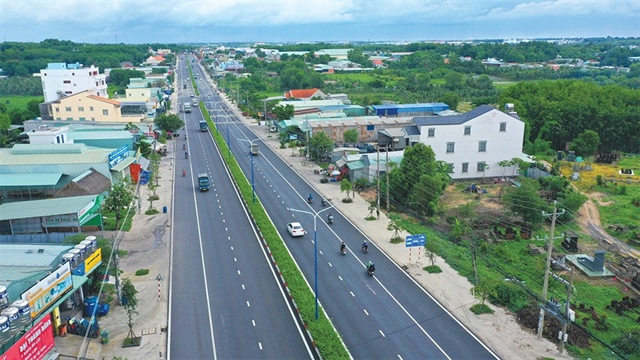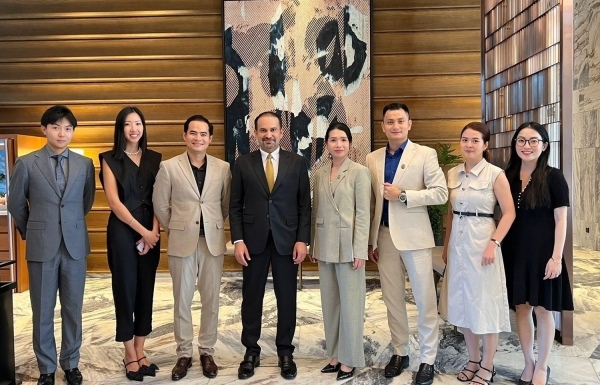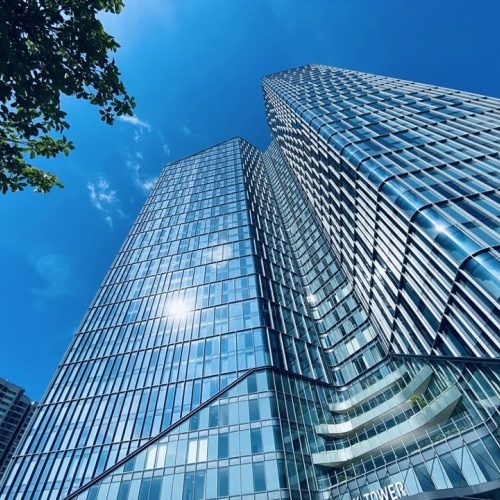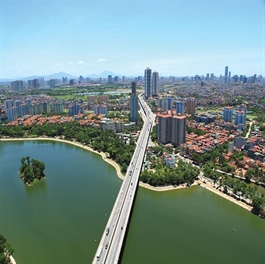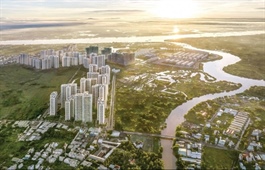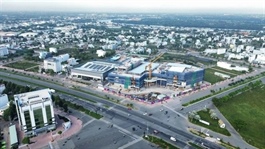Resilience, reform, and room for growth across real estate
Resilience, reform, and room for growth across real estate
As the US tariff landscape shifts once again, Vietnam finds itself navigating change from a position of strength. Alex Crane, managing director at Knight Frank Vietnam, writes about what could happen in terms of investment into Vietnam across real estate, logistics, and more.
The US tariffs on Vietnamese imports now sit at 20 per cent. However, it would surprise me if this is the end of the story. My take on what plays out from here is formed from a few merging timelines and paths Vietnam has found itself travelling over the last few years, and these will combine to determine what happens in the coming months.

Alex Crane, managing director at Knight Frank Vietnam |
Immediately, we can take a view on other Asian nations and consider that Vietnam’s reciprocal tax rate is comparable to our peers, loosely meaning we remain as competitive as we were before the tariffs took effect. In essence, our regional competitors for manufacturing, tourism, and services are in the same position as they were before. The well-known strategic advantages of Vietnam such as labour, location, and investment policies have therefore not changed to a great extent.
What happened across various sectors of the real estate market in the second quarter, between the tariff announcement and the US signing an executive order for the deal with Vietnam, was interesting. I wrote some thoughts for VIR in April. The first was that Chinese manufacturers would slow down, which did not happen, at least in the immediate term. Our data shows 35 per cent of major industrial land transactions in H1 originated from China, with US firms at 27 per cent.
That said, decisions to move manufacturing and supply chains are years in the making, and so there may be some lags to deal with completions we have not yet seen, but in Q2 around 400 hectrares of land was absorbed, almost double from 2024, which is a positive indicator for the time being.
I also thought that the residential sector might be seen as a safe haven against equities (volatile at the time) and gold (expensive or even unavailable), and residential sales in Q2, almost triple that of Q1, would suggest that was correct.
I also shared my belief that multinational companies would slow down on new budget approvals for projects/relocations briefly. This did happen, but it has also just as quickly come back as time moved on, which signals that perhaps inertia, on balance, is worse than the potential tariff impact.
Significant shifts
There is no doubt the hit ran deep in a few areas of our market. Furniture and garment manufacturing, so heavily exposed to the US, bore the brunt of uncertainty, but also peaked in a rush of orders. In addition, what is yet to be seen is the longer-term impact of transshipment and how manufacturers will accommodate this. But let us not forget that the transshipment topic is not new, and many firms have been actively preparing for this before the tariff announcement.
This brings us to the positioning of the Vietnam manufacturing economy and investment climate before the tariffs were announced. The Vietnamese government has long been proactively encouraging a pro-business environment, particularly in manufacturing. The influx of foreign firms and growth of local firms’ capability over the past 20 years is obvious.
More recently, we have seen more sophistication in the local market with higher quality international capital providing new industrial parks and ready-built facilities, easing the barriers to entry that were experienced before 2016 when the markets really started to move in terms of international standards.
After the US-China trade conflict from 2018, industrial land pricing surged 8-15 per cent compound annual growth rate until 2022, which would always be difficult to sustain and would damage competitiveness. Since then, growth moderated to 2-5 per cent, which I consider to be far more sustainable and better to encourage new investment. This rationalisation of the market and pricing has balanced the narrative for both manufacturers and large investors in industrial real estate, hopefully providing a more stable base.
Other areas where there has been significant investment by the government include infrastructure, which supports all real estate asset classes. The improvement in roads, ports, metro lines and airports in the last few years is outstanding, even if sometimes a little delayed.
This underpins other directives by the government, including the streamlining of governmental departments and provincial mergers, which investors will see with positivity.
Reforms to land and real estate law and adding incentives to support high-tech and supporting industries alongside encouragement for small businesses and the broader private sector to support GDP growth is encouraging for a multitude of sectors.
Notably, the Ho Chi Minh City and Hanoi office markets came into 2025 on the back of record years. Commercial occupiers, as quickly as they paused to take stock of tariffs, have committed again to proceeding with headcount growth and a requirement for more office space.
At the top, Vietnam has broadened its connectivity to global markets, and moves to establish international finance centres in Ho Chi Minh City and Danang will be a boost to financial employment and broader real estate development, albeit in the longer term.
Effectively, we are entering the period of these new tariffs with a tailwind from 2025, coupled with new paths for economic growth, while retaining the US as an important partner, and better legal frameworks and government policies and processes to encourage higher quality investment into the country.
|
Bumps in the road
This brings us to what is going to happen next and what may encourage further investment.
Real estate assets do not ‘blip’ like the stock market, as it is too slow of an asset class to do so. Shocks like the tariff announcements, as serious as they are, generally do not derail most investor or corporation views over the longer term.
Doing business in Vietnam is not a short-term decision, and whilst reforms will make entry smoother, investors will still factor in such shocks and be braced for long-term presence here. The real positive note from this episode is that our clients, for the most part, seem capable of riding the bumps. This perhaps could not have been said in 2016-2018, particularly when the industrial market was still so nascent.
Looking honestly at the industrial and logistics segment, and it is easy to get caught up in the good headlines – we have to say that the warehousing side of industrial development has really underperformed compared to what many had expected.
We previously outlined this at the end of 2023, showing this again is not a direct impact of tariffs, but earlier challenges from the pandemic. This has been further disrupted supply chains from geopolitical issues in Europe and the Middle East, and, led by the US, a shift away from ‘just in time’ delivery to holding more inventory.
The good news is that just before the tariffs were announced, activity for warehouses had just started to signal a turnaround. I believe that, with Vietnam’s improved position in the global marketplace, the continued improvements to infrastructure and export procedures, which improve operators costs, the momentum may shift back again positively in 2026, barring any more unforeseen challenges.
Indeed, earlier this year, some large warehouse space was committed by Asian e-commerce companies. Maybe this is also an indicator that the future of the warehousing market may be more resilient if it were less weighted on US performance.
The larger concerns for the real estate sector are similar to those pre-tariffs. Affordability of housing is widely reported and faces challenges derived from land prices being too high to allow for lower-cost development. This is also an issue in the office market. Ho Chi Minh City has no new B-grade offices planned in downtown areas, which is a direct result of land and construction costs being too expensive to allow returns for more modestly priced buildings. They are simply not viable for developers, much like social and affordable housing.
Further, consumer sentiment is key in the retail sector and hospitality, where one may argue that retail sales prices and hotel room rates are already significantly more expensive than, say, Bangkok or Kuala Lumpur. This may be supported by tourism in terms of performance, but bottlenecks of available land in downtown areas are keeping a limit on supply, and thus keep occupancy and operation costs higher for operators.
What is encouraging is that the tariff shock might have helped clarify focus and intent on faster reforms and government processes. Streamlined development approvals, land pricing mechanisms, greater land access, better transparency of ownership, planning and process, and long-term infrastructure planning are now moving faster. Streamlined approvals and better infrastructure are not just quick responses; they are structural tailwinds implemented over several years. I believe, with a few exceptions, various asset types of real estate will follow this positive trajectory.
- 09:34 21/08/2025


